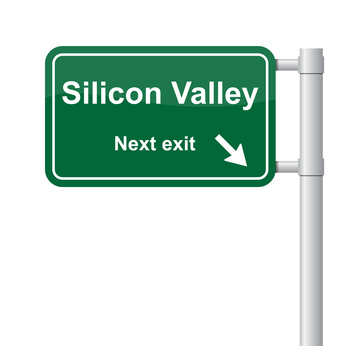ブログ
Why Have Convertible Note Financings Become So Popular? (コンバーティブル・ノートがポピュラーになった理由)

※文末に【参考和文】があります。
Hi. It’s John Sasaki again.
Recently we discovered Ichigo’s doppelganger. Here is a photo of the two of them. Can you tell which one is Ichigo?

In the old days (15-20 years ago), start-ups in Silicon Valley would raise their initial outside financing through a vehicle called a “skinny” preferred stock financing. This was a simpler version of a typical VC preferred stock financing. The company would issue preferred stock to the investors, but the terms of the preferred stock were limited to dividend and liquidation preferences, enough to justify the price differential with the common stock.
These days, I guess this would be called a “Series Seed” financing.
But now, it seems that more and more start-ups in Silicon Valley are raising their initial outside financing through convertible note financings. In a typical convertible note financing, the investors will provide their initial investment in the form of a loan, which will be automatically converted into stock of the company (usually preferred stock) at a future time upon the satisfaction of certain conditions. So, why are these convertible note financings so popular?
Well, it’s because convertible note financings have several advantages over preferred stock financings, even simple ones like “skinny” preferred or Series Seed, which benefit both the company and the investors.
| 1. No Valuation Required
Even in the simplest preferred stock financing, the parties must negotiate a price for the shares, or a valuation for the company. This is always challenging for a private company, especially a start-up.
In a convertible note financing, the negotiation on valuation is deferred until the notes convert into stock of the company.
This saves both time and money.
| 2. Simple Documentation
Even in the simplest preferred stock financing, the parties must negotiate the terms of the preferred stock. This means that an amendment to the certificate of incorporation is required, which means that a filing with the secretary of state is required. This means time to review the document by the secretary of state, and possible comments, which means more time and expense.
In addition, there would be a stock purchase agreement and maybe another agreement or two (such as an investors’ rights agreement and/or a stockholders agreement), depending on the course of negotiations.
In a typical convertible note financing, the only documents are a note purchase agreement and a convertible promissory note. And, in their simplest forms, these are fairly standard forms that don’t require a lot of negotiation.
This also saves time and money.
| 3. Minimal Due Diligence
Even in the simplest preferred stock financing, the investors will typically conduct some operational and legal due diligence, because the investors will become part owners of the business when they become stockholders.
Contrast this to a convertible note financing, where the investors are essentially lenders until the notes are converted. Because they are not owners of the business at the initial stage, they are less concerned with the company’s operations (although the investors would still need to conduct some basic financial due diligence to assess the repayment risk).
Then, at the time the notes convert (which is usually automatically upon a financing that raises a specified amount), the lead investor of the preferred stock financing will most likely conduct a complete due diligence. Not only is the note holder able to piggyback on the efforts of the lead investor, it can also avoid at least some of the cost.
This also saves time and money.
| 4. Risk Hedge
For the investors, the convertible note financing is a risk hedge. Before the notes are converted, the investors are lenders, which means that they have priority over the stockholders in their claims against the company if the company doesn’t get funded. And if and when the note holders become stockholders, the company will be funded.
The convertible note financing also leaves the decisions on valuation, document negotiation and due diligence to the lead investor in the preferred stock financing. As mentioned above, this not only allows the note holder to leverage the experience of another investor, it alleviates some of the cost burden.
| 5.No Shareholder Rights
For the company, the convertible note financing allows the company to raise funds without incurring obligations to stockholders.
Stockholders have certain statutory information and inspection rights, but lenders and note holders do not. They may have certain contractual rights, but this is a matter of negotiation between the company and the note holders.
In addition, because the note holders will not become stockholders until a later time (i.e., when the notes convert), the dilution to the other stockholders may be less, if the value of the company has increased between the time of the convertible note financing and the conversion of the notes.
* * * * * * * * * * * * * *
In a future article, I will discuss the terms of note financings in more detail.
But what about convertible equity, such as a SAFE or KISS? This will also be discussed in a future article.
In the meantime, if you have any questions, please feel free to contact me at jsasaki@jsvlaw.com.
【参考和文】※ニュアンス等を考慮して多少意訳及びアレンジしたものであり、直訳ではありません。
こんにちは。ジョン佐々木です。
最近イチゴが分身を見つけました。これがふたりの写真です。どちらがイチゴか分かるでしょうか?

かつて(15~20年前)、シリコンバレーのベンチャー企業は、最初の外部からの資金調達を、「スキニーな」優先株と呼ばれる方法で行っていました。それは典型的なVC優先株投資の簡易版のようなもので、優先株であるものの、(普通株との価格差を正当化するための)配当と残余財産の優先権に限定されていました。
上記のようなファイナンスは、近頃は「シリーズ・シード」ファイナンスと呼ばれるようです。
ですが今は、シリコンバレーで、最初の外部からの資金調達で、コンバーティブル・ノート・ファイナンスを利用するベンチャー企業がどんどん増えているようです。コンバーティブル・ノート・ファイナンスとは、典型的には、投資家が当初ローンの形で投資し、将来一定の条件を満たしたときに自動的に会社の株式(通常は優先株)に転換されるものです。このようなコンバーティブル・ノート・ファイナンスが、非常にポピュラーになっているのはどうしてでしょうか。
それは、コンバーティブル・ノートによる資金調達(以下「コンバーティブル・ノート・ファイナンス」)が、優先株による資金調達(たとえ「スキニー」優先株やシリーズ・シードであっても)にまさる、会社、投資家双方にとっての利点を有しているからです。
| 1. バリュエーション不要
どんなシンプルな優先株ファイナンスでも、株価や会社の価値を交渉しなければなりません。これは非公開の会社、特にベンチャー企業には常に困難なことです。
コンバーティブル・ノート・ファイナンスでは、バリュエーションの交渉はノートが株式に転換されるまで先送りされます。
これによって時間と費用を節約できます。
| 2. シンプルなドキュメンテーション
どんなシンプルな優先株ファイナンスでも、優先株の条件を交渉しなければなりません。定款の変更が必要であり、州にファイリングをする必要があります。州のレビューを受けることになり、何らかの指摘を受ける可能性もあるため、より時間と費用がかかります。
さらに、株式引受契約(Stock Purchase Agreement)と、交渉の状況によって、更に1個2個の契約書(Investors’ Rights AgreementやStockholders Agreement(株主間契約))が必要になります。
一般的なコンバーティブル・ノート・ファイナンスで必要な書面は、ノートの引受契約とコンバーティブル・ノートの証書(convertible promissory note)だけです。そしてその最もシンプルなケースに関しては、極めて標準的なフォームがあり、多くの交渉は必要ありません。
この点でも時間と費用が節約されます。
| 3. 最小限のデュー・ディリジェンス
最もシンプルな優先株ファイナンスでも、株主になれば事業のオーナーの一部になりますので、通常、投資家は、ビジネスと法務のデュー・ディリジェンスを何らか行うでしょう。
対してコンバーティブル・ノート・ファイナンスをみてみると、投資家はノートが転換されるまでは貸主(債権者)です。この初期の段階では事業のオーナーではありませんから、会社のオペレーションにそれほど関心がありません(但し、回収リスクを審査するための基本的な財務デュー・ディリジェンスは必要と思われます。)。
そしてノートが転換されるときに(一定額の資金調達時に自動的に転換される条件になっていることが通常です。)、優先株ファイナンスのリード投資家は完全なデュー・ディリジェンスを行うことになるでしょう。ノート保有者は、リード投資家の労力に「ただ乗り」でき、コストも節約できることになります。
この点でも時間と費用が節約されます。
| 4. リスクヘッジ
投資家にとって、コンバーティブル・ノート・ファイナンスはリスクヘッジになります。ノートが転換されるまでは、投資家は貸主であり、会社が資金を調達できないときに、会社に対する権利行使において株主に優先します。そして、株主になるときには、会社は資金を調達できています。
コンバーティブル・ノート・ファイナンスでは、優先株ファイナンスの際に、リード投資家がバリュエーションの判断、契約交渉及びデュー・ディリジェンスを行うことになります。上述のとおり、これによって、ノート保有者は他の投資家の経験の恩恵にあずかれるだけでなく、コストを削減することができます。
| 5. 株主の権利がないこと
会社にとっては、コンバーティブル・ノート・ファイナンスは、株主に対する義務を負担せずに資金を調達する手段となります。
株主には、一定の情報請求及び検査に関する法的権利がありますが、貸主やノート保有者にはありません。契約上の権利を持つことはありますが、それは会社とノート保有者の交渉次第となります。
さらに、ノート保有者はしばらく後(ノートを転換するとき)まで株主になりませんので、コンバーティブル・ノート・ファイナンス実施時から転換時までに会社のバリューがあがれば、他の株主の希釈化も少なくて済むことになります。
* * * * * * * * * * * * * *
今後の記事で、コンバーティブル・ノート・ファイナンスをより詳しく説明する予定です。
SAFEやKISSといった、コンバーティブル・エクイティについては? これについても今後の記事で。
ご質問があれば、jsasaki@jsvlaw.comまでお気軽にご連絡下さい。
【参考和文作成:弁護士 林 賢治】
原本の記事(英語)(除):JSV外国法事務弁護士事務所
和文の記事:AZX法律事務所 AZXのブログの記事:
http://www.azx.co.jp/blog/?p=1759


